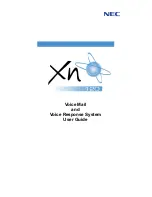
11.
8. Operational test — Open the Model B Manual Emer-
gency Station. Alternatively, operate the electrical detection
system and deplete pneumatic pressure from the sprinkler
system.
Note
: AN OPERATIONAL TEST WILL CAUSE THE DEL-
UGE VALVE TO OPEN AND FLOW WATER INTO THE
SPRINKLER SYSTEM.
9. Secure the Model B Manual Emergency Station in the
OFF position with nylon tie after Deluge Valve is reset.
Testing Detection System Without Operating
Deluge Valve
1. Close the valve controlling water supply to the deluge valve
and open the main drain valve.
2. Verify that valve supplying hydraulic pressure to the piston/
pushrod chamber is open, allowing water to enter the pushrod
chamber.
3. Operate the electrical detection system and deplete pneumat-
ic pressure from the sprinkler system.
4. Operation of the detection combined with loss of pneumatic
pressure must result in a sudden drop of water pressure in the
pushrod chamber, as indicated by the pressure gauge on the hy-
draulic release trim.
5. Reset the valve per the reset instructions.
Maintenance
The owner is responsible for maintaining the fire protection sys
-
tem in proper operating condition. Any system maintenance or
testing that involves placing a control valve or detection/control sys-
tem out of service may eliminate the fire protection that is provided
by the fire protection system.
The Reliable Model DDX valve and associated equipment shall
periodically be given a thorough inspection and test. NFPA 25, “In-
spection, Testing, and Maintenance of Water Based Fire Protection
Systems,” provides minimum maintenance requirements. System
components shall be tested, operated, cleaned, and inspected at
least annually, and parts replaced as required. Replace any com-
ponents found to be corroded, damaged, worn, or non-operable.
Increase the frequency of inspections when the valve is exposed
to corrosive conditions or chemicals that could impact materials or
operation of the assembly.
If face plate is removed during maintenance, torque face plate bolts
to the following values during re-installation:
•
35 ft-lbs. (47 N-m) for 2” through 4” valves
•
70 ft-lbs. (95 N-m) for 6”-8” valves
Troubleshooting
1. Mechanical sprinkler alarm not operating: This is most likely
caused by a clogged screen in the strainer of the water motor. Pro-
ceed as follows: Remove plug from the strainer. Remove and clean
the screen. Replace the screen and the plug, and then tighten se-
curely (Ref. Bulletin 613).
2. Water leaking from Ball Drip. This can be caused by either a
water column on top of the clapper or a supply water leakage.
a. Leakage due to water column. This condition is caused by
leakage past the clapper seal assembly. Be sure the clapper
seal and seat are free of any type of de-bris or damage. If nec-
essary, follow steps below to replace the seal assembly and/
or seat.
b. Supply water leakage. This condition is caused by leakage
past the lower seat O-ring. Follow steps below for inspection
and/or replacement of lower seat O-ring.
Repair Procedures - Model DDX Deluge Valve
The following section provides instructions to correct both condi-
tions:
1. Disable detection system.
2. Shut down the valve controlling the water supply to the Del-
uge Valve and open the main drain valve. Open the condensate
drain valve. Close the pushrod chamber supply valve and open the
Model B Manual Emergency Station.
3. Remove the Deluge Valve front (handhold) cover and inspect
the seat, clapper, and seal assembly for damage. If inspection indi-
cates damage to the seal assembly, replace as follows:
4. Remove the bumpstop nuts and remove the seal assembly.
Install a new seal assembly and thread the bumpstop nuts onto the
threaded studs of the seal assembly. Tighten finger tight plus ¼ to
½ turn.
5. If inspection indicates damage to the clapper, proceed to step
6.
6. At the rear of the valve, disconnect the condensate drain trim
section starting with the elbow connector. Then remove the ¼”
globe valve, followed by the ¾”x¼” reducing bushing. Remove the
retaining rings from the clapper hinge pin, push the hinge through
the condensate drain opening and remove the clapper subassem-
bly. Install a new clapper subassembly in the reverse order making
sure the clapper spacers are in their proper position.
7. If the seat is damaged, or it is suspected that the leakage is
through the seat O-rings, proceed to step 8.
8. Using Reliable P/N 6881603000 Seat Wrench for 2” (50mm),
2½” (65mm), 76mm and 3” (80mm) valve sizes, Reliable P/N
6881604000 for 4” (100mm) valve size, Reliable P/N 6881606000
for the 6” (150mm) and 165mm valve sizes or Reliable P/N
6881608000 Seat Wrench for 8” (200mm) valve size, remove the
seat by unscrewing. This will loosen the seat-clapper-mounting ring
subassembly. Reach into the valve and grasp the seat and remove
it from the valve. Then remove the clapper-mounting ring subas-
sembly from the valve. Visually examine all components of the seat-
clapper-mounting ring subassembly and replace any component
that appears damaged. New O-rings should always be used for
reassembly.
Summary of Contents for DDX
Page 13: ...13 750EXP_A Fig 4 ...



































